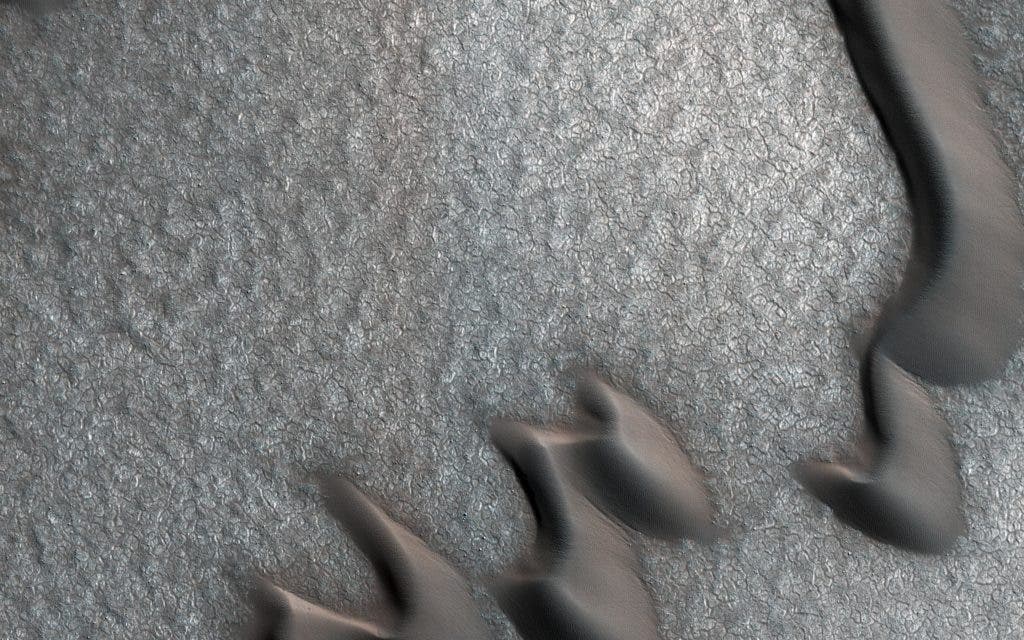NASA’s Mars Reconnaissance Orbiter (MRO) recently came across a striking sight while flying over a patch of Mars’ far north. The photo that the spacecraft beamed back to Earth shows dark streaks on a silvery surface, dotted by great sand dunes. It doesn’t look at all like Mars, which is what makes this photo so unique.
Mars — always full of surprises
Zooming in more closely (click here for high-res), you can make out that the dark cracks are actually boulders piled at regular intervals. According to NASA, this may be a sign of a phenomenon called “frost heave.”
“What organized these boulders into neatly-spaced piles? In the Arctic back on Earth, rocks can be organized by a process called ‘frost heave,’” NASA explains. “With frost heave, repeatedly freezing and thawing of the ground can bring rocks to the surface and organize them into piles, stripes, or even circles. On Earth, one of these temperature cycles takes a year, but on Mars it might be connected to changes in the planet’s orbit around the Sun that take much longer.”
The features captured in the image lie at a latitude of 74.94 degrees north and a longitude of 279.34 degrees east. MRO was 320 kilometers above the planet’s surface when it snapped this astonishing photo, but despite the great distance, NASA says objects as small as a meter can be resolved.










